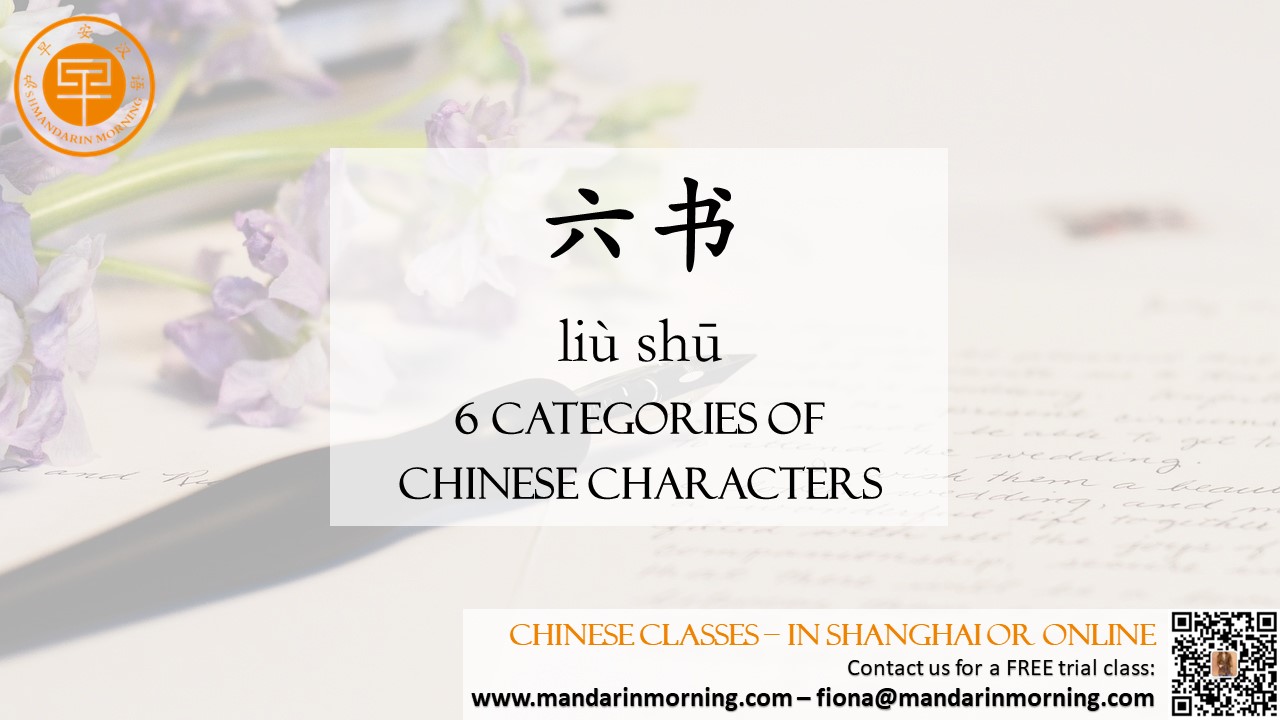| Chinese characters are split into six different categories referred to as 六书 (liùshū). The concept of 六书 (liùshū) was first created by scholars during the Han dynasty based on the composition and usage of individual characters. Here is part two of our article.  Type 4: Compound ideograms 会意字 (huìyìzì) 会意 (huìyì) characters are also quite self-explanatory. Usually, they are created by the combination of two or more pictograms or ideograms but they are more abstract. 会意 characters “remedy” the limitations of using pictograms or simple ideograms to create characters. 会意 characters have a comparative advantage in that they can better express abstract meanings and provide a more robust method of creating new characters. For example, the pictographic character 木 (mù; wood) can be combined combined with the radical 亻(rén; person radical) to create 休 (xiū; to rest). Think of a person resting under the shade of a tree! Here are some other interesting compound ideograms: 看 (kàn; to look) is a combination of 手 (shǒu; hand) and 目 (mù; eye) 烦 (fán; to trouble, to to feel vexed) combines 火 (huǒ; fire) and the radical 页 (yè; page, leaf). It’s easy to see how a pile of burning pages could be stressful! Type 5: Transfer characters 转注字 (zhuǎnzhùzì) 转注字 (zhuǎnzhùzì) are characters with meanings influenced by other words. They are sometimes referred to as “mutually explanatory” characters. In Chinese linguistics, transfer characters appear in three different styles: transference of character form (形转; xíngzhuǎn), transference of character meaning (义转; yìzhuǎn), and transference of sound (音转; yīnzhuǎn). The characters 考 (kǎo; to test) and 老 (lǎo; old) are considered 转注 (zhuǎnzhù) characters because they were previously interchangeable, but over time they started to represent different things and their meanings drifted apart. 窍 (qiào; hole) and 空 (kōng; emptiness) represent another example of a pair of characters that historically were semantically interchangeable, but now hold different meanings. Type 6: Loan characters 假借字 (jiǎjièzì) 假借字 (jiǎjièzì) are 'borrowed” or “loan” characters. This term refers to a set of characters that were used to create other characters that sound the same or similar. In linguistics, these are referred to as homophonous or near-homophonous morphemes. Although these phonetic borrowings created new characters, sometimes the original character’s meaning was completely discarded and a new character was created to convey its meaning. For example, the character 乎 (hū) originally meant “to call out” but it was also used as a grammatical particle in classical Chinese to express a question. Eventually, a new character 呼 (hū) was created to write the verb “to call out” by “borrowing” the sound of 乎 and adding a mouth radical. Another example of characters of this type is 必 (bì; must), which originally meant “weapon handle.” Since the pronunciation of 必 was similar to the word “must,” the character 必 began to be used to represent the word “must.” To help differentiate the two, a new character 柲 (bì) was eventually created to convey the meaning of a “weapon handle.” The common character 来 (lái) has a similar history. Originally, 来 meant “wheat,” but this meaning was gradually replaced and 来 began to be used as a verb meaning “to arrive.” As a result, a new character, 麦 (mài), was assigned to represent “wheat.” Notice the change in the initial sound, which went from “l” in 来 (lái) to “m” in 麦 (mài). |